

If you're a new amputee, you may be wondering if you can still d rive post-amputation. The good news is: Yes, you can. People with any level of lower- or upper-limb amputation can go back to doing the things they enjoyed pre-amputation, including running and cycling , albeit modified.

Depending on the condition of your residual limb and prosthesis, you may need to modify your car's setup, as well as consider driving an automatic transmission for safe and comfortable driving. If you own a vehicle that has a manual transmission, driving with a prosthesis is still possible. However, before you start re-learning how to drive, we highly recommend consulting your prosthetist, primary care doctor, and physical therapist, all of whom can determine if you are ready, as well as direct you in finding the appropriate equipment. They are also the best sources of advice on which car modifications are best for your situation.
As for the legalities, you will need to update your information and report your amputee life to your state's driving license office. They will tell you what the next steps are to continue to drive legally. Often, this step requires r etaking your license exam and placing an additional endorsement on your license.
You may add a steering knob for better one-hand control. Depending on which arm has experienced an amputation, you may also need to modify your dashboard controls for easy access to the headlights, turn signals, and wipers.
A foot steering system may be the best system for you. It allows you to control steering, as well as activate the dashboard functions using just one foot.
The extent of your injury will determine how to modify your car best. You may be able to control the vehicle as you normally would or with minor modifications using your residual limb or prosthesis. However, if your grip is compromised, or you find steering the wheel and using the dashboard difficult, consult your healthcare team to find out which modifications suit you.
Driving your car using special hand controls is best for your situation. There are also different setups and models available. Often, this setup requires a lever for your left arm to control braking and accelerating, as well as a steering knob for one-hand steering.
You can have your car specially modified and have the accelerator pedal put on the left side of the brake. Another option is to use special hand controls as recommended above for those with bilateral lower-limb amputations.
In this case, you can still drive a standard automatic car using your right leg.
Just like other modified activities, learning to drive again as an amputee takes time and patience. Be patient with yourself, and you will soon regain your independence on the road.
How do you drive your car? What modifications did you implement? Please share your experiences with the rest of the community in the comments section below.

Copy to Clipboard
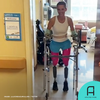 41-Year-Old Mom Walks for the First Time After Losing All Four Limbs to Sepsis
41-Year-Old Mom Walks for the First Time After Losing All Four Limbs to Sepsis 10-Year-Old Boy Excited to Play Golf with New Prosthetic Arm
10-Year-Old Boy Excited to Play Golf with New Prosthetic Arm Ultrasound Tech Can Help People with Upper-Limb Loss
Ultrasound Tech Can Help People with Upper-Limb Loss Adaptive Athlete Tests Para Speed Skating Prototype Developed in Colorado
Adaptive Athlete Tests Para Speed Skating Prototype Developed in Colorado New MIT Method Uses Light to Control Muscles, Potentially Solving Prosthesis Issues
New MIT Method Uses Light to Control Muscles, Potentially Solving Prosthesis Issues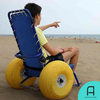 Some SoCal Beaches Take Steps to Accommodate Individuals with Disabilities
Some SoCal Beaches Take Steps to Accommodate Individuals with Disabilities 14-Year-Old Below-Knee Prosthesis User Defies Odds, Dominates in Three Sports
14-Year-Old Below-Knee Prosthesis User Defies Odds, Dominates in Three Sports First Triple Amputee to Scale Everest Base Camp Credits Success to Good Mental Health
First Triple Amputee to Scale Everest Base Camp Credits Success to Good Mental Health MMA Fighters Make History in Australia’s First-Ever Amputee Cage Fight
MMA Fighters Make History in Australia’s First-Ever Amputee Cage Fight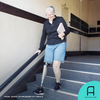 Osseointegration Gives Woman With Above-Knee Limb Loss a New Lease on Life
Osseointegration Gives Woman With Above-Knee Limb Loss a New Lease on Life Coping With Pain After Limb Loss: Insights for Combat Veterans
Coping With Pain After Limb Loss: Insights for Combat Veterans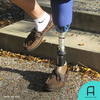 Is A Motor-Driven Adaptive Prosthetic Socket Better for Below Knee Limb Loss?
Is A Motor-Driven Adaptive Prosthetic Socket Better for Below Knee Limb Loss? Double Amputee Firefighter Fights for Better Disability Inclusion
Double Amputee Firefighter Fights for Better Disability Inclusion Man With Double Leg Amputation Emphasizes Importance of Support Groups
Man With Double Leg Amputation Emphasizes Importance of Support Groups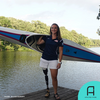 Shriners Prosthetist To Compete in 2024 Paralympics
Shriners Prosthetist To Compete in 2024 Paralympics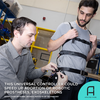 This Universal Controller Could Speed Up Adoption of Robotic Prostheses, Exoskeletons
This Universal Controller Could Speed Up Adoption of Robotic Prostheses, Exoskeletons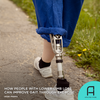 How People With Lower-Limb Loss Can Improve Gait Through Exercise
How People With Lower-Limb Loss Can Improve Gait Through Exercise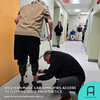 Western Mass. Lab Simplifies Access to Cutting-Edge Prosthetics
Western Mass. Lab Simplifies Access to Cutting-Edge Prosthetics Bill Introduced to Protect Medicare Beneficiaries’ Access to Orthotics, Prosthetics
Bill Introduced to Protect Medicare Beneficiaries’ Access to Orthotics, Prosthetics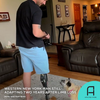 Western New York Man Still Adapting Two Years After Limb Loss
Western New York Man Still Adapting Two Years After Limb Loss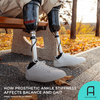 How Prosthetic Ankle Stiffness Affects Balance and Gait
How Prosthetic Ankle Stiffness Affects Balance and Gait The Cerebellum of the Brain May Aid in Guiding Prosthetic Limbs
The Cerebellum of the Brain May Aid in Guiding Prosthetic Limbs After Losing Her Leg to a Shark, a 73-Year-Old Scuba Diver Bravely Returns to the Water
After Losing Her Leg to a Shark, a 73-Year-Old Scuba Diver Bravely Returns to the Water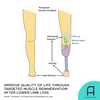 could help improve pain after lower limb loss." />Improve Quality of Life Through Targeted Muscle Reinnervation After Lower Limb Loss
could help improve pain after lower limb loss." />Improve Quality of Life Through Targeted Muscle Reinnervation After Lower Limb Loss NJ Bill Proposes Insurance Coverage for Athletes’ Artificial Limbs, but Some Feel Excluded
NJ Bill Proposes Insurance Coverage for Athletes’ Artificial Limbs, but Some Feel Excluded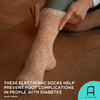 These Electronic Socks Help Prevent Foot Complications in People With Diabetes
These Electronic Socks Help Prevent Foot Complications in People With Diabetes 51-year-old Plays Baseball Again After Limb Loss
51-year-old Plays Baseball Again After Limb Loss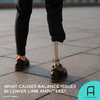 What Causes Balance Issues in Lower Limb Amputees?
What Causes Balance Issues in Lower Limb Amputees? This Curler Uses A Prosthetic Arm on the Ice
This Curler Uses A Prosthetic Arm on the Ice Combining Art and Science: Inside a Prosthetist’s Workshop
Combining Art and Science: Inside a Prosthetist’s Workshop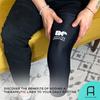 Discover the Benefits of Adding a Therapeutic Liner to Your Daily Routine
Discover the Benefits of Adding a Therapeutic Liner to Your Daily Routine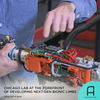 Chicago Lab at the Forefront of Developing Next-Gen Bionic Limbs
Chicago Lab at the Forefront of Developing Next-Gen Bionic Limbs The Impact of Microaggression on Limb Loss Healthcare
The Impact of Microaggression on Limb Loss Healthcare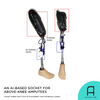 An AI-Based Socket for Above-Knee Amputees
An AI-Based Socket for Above-Knee Amputees Why Acknowledging Your Successes Unlocks Your Potential
Why Acknowledging Your Successes Unlocks Your Potential Finding Hope in a Dark Tunnel: A Reflection
Finding Hope in a Dark Tunnel: A Reflection Smart Shower Startup, Showee, Brings Accessibility to the Forefront
Smart Shower Startup, Showee, Brings Accessibility to the Forefront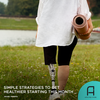 Simple Strategies to Get Healthier Starting This Month
Simple Strategies to Get Healthier Starting This Month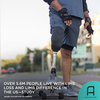 Over 5.6M People Live with Limb Loss and Limb Difference in the US—study
Over 5.6M People Live with Limb Loss and Limb Difference in the US—study Travel Agency Wheel the World Makes Traveling Accessible
Travel Agency Wheel the World Makes Traveling Accessible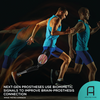 Next Gen Prostheses Use Biomimetic Signals to Improve Brain-Prosthesis Connection
Next Gen Prostheses Use Biomimetic Signals to Improve Brain-Prosthesis Connection How to Find Motivation When You’re Depressed
How to Find Motivation When You’re Depressed Against All Odds, Young Boy Shines Brightly
Against All Odds, Young Boy Shines Brightly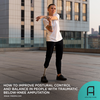 to improve postural control in people with traumatic below-knee amputation." />How to Improve Postural Control and Balance in People With Traumatic Below-Knee Amputation
to improve postural control in people with traumatic below-knee amputation." />How to Improve Postural Control and Balance in People With Traumatic Below-Knee Amputation Nurse Challenges Navy Regulations Discriminating Against Disabled People
Nurse Challenges Navy Regulations Discriminating Against Disabled People Challenging Weight Prejudice in the Healthcare System
Challenging Weight Prejudice in the Healthcare System How to Handle Someone With A Narcissistic Personality
How to Handle Someone With A Narcissistic Personality How to Talk to Your Healthcare Team About Chronic Pain
How to Talk to Your Healthcare Team About Chronic Pain Researchers Develop Technology that Controls Robotic Prosthetic Legs Better
Researchers Develop Technology that Controls Robotic Prosthetic Legs Better Man Overcomes Double Amputation Challenges, Returns to Work
Man Overcomes Double Amputation Challenges, Returns to Work